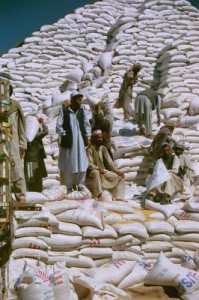The Washington Post reports:
The United States and its allies have devoted years of effort and billions of dollars to improve the delivery of basic services in rural Afghanistan. If Afghan leadership were to have taken hold anywhere, it might well have been in Karz, a farming area on the outskirts of Kandahar city still populated by relatives and tribesmen of the man who has ruled Afghanistan through a decade of war.
Instead, what is emerging in ever starker relief is a governance vacuum as U.S. forces begin to draw down. As the Americans leave, taking with them a main source of economic stimulus, U.S. officials and residents say what worries them most is the weakness of the local and provincial governments being left behind, which command virtually no resources and almost no authority.
 The entire story is worth reading in full, as it explains in detail how hollow many of the reconstruction and political goals of the war in Afghanistan have been.
The entire story is worth reading in full, as it explains in detail how hollow many of the reconstruction and political goals of the war in Afghanistan have been.
The story of Karz represents many of the lessons we need to learn about Afghanistan that the American Security Project is analyzing in a report to be released this week. The village of Karz has suffered from a lack of planning, a failure to understand the environment, and a reliance on magical thinking — assuming that U.S. expenditure would create a sustainable political and economic environment after the U.S. leaves.
All three are lessons we identify in our upcoming report. One aspect of this planning failure that we discuss is the challenge of providing electricity. We focus on Kajaki in Helmand and the Tarokhil plant outside of Kabul: both hugely expensive American endeavors that are over budget and underperform. The Tarokhil plant in particular requires fuel that is too expensive to maintain without heavy American subsidy. The Post, here, mentions almost off-handedly that Kandahar faces a similar challenge:
A major source of irrigation water comes from the reservoir at the Dahla Dam outside Kandahar city, which the United States is paying about $200 million to enlarge because it is about one-third silted up. Much of the city’s electricity comes from two 10-megawatt generators that require an annual U.S. subsidy of about $50 million to pay for the diesel fuel. But that subsidy is scheduled to run out sometime during the middle of next year, forcing Afghans to either cut back on power or significantly raise fees.
Sadly, this sort of shortfall did not have to happen. It was not inevitable. It is the result of being short sighted. ASP will be discussing in the future how better planning can prevent this and similar boondoggles in the future.


